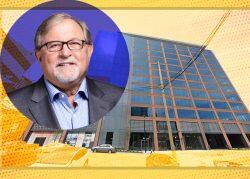 Mark Goodman, Tishman ink firm to big lease at Fulton Market spec office
Mark Goodman, Tishman ink firm to big lease at Fulton Market spec office
Trending
Snapchat parent company eyes Fulton Market for new office space
The move by Snap would double the amount of office space it currently has

The parent company of popular social media app Snapchat is planning a move in Chicago that would double the amount of office space it currently holds.
Snap, which is based in Santa Monica, California, is in advanced talks to lease approximately 25,000 square feet at the 17-story building at 167 N Green Street in Fulton Market. Once the deal is finalized, Snap will move from its leased space at 648 N Clark Street in River North, Crain’s Chicago Business reported.
In addition to Snap, Chicago-based transportation logistics provider MoLo Solutions is looking to almost triple its office space with a new lease at 167 N Green. The company, which currently leases 33,000 square feet at 120 N Racine Avenue, is nearing a lease of 93,000 square feet in the new Fulton Market district building.
Even before Snap and MoLo finalize their leases, the building at 167 N Green is close to being 70 percent leased. It includes such tenants as CCC Information Services, Kroll, Foxtrot Market, Jet Support Services and WeWork.
Many companies have been migrating to Fulton Market, including Kimberly-Clark, TikTok, Hazel Technologies and Calamos Investments. They have followed the lead of other larger corporations like Google, McDonald’s and Glassdoor.
The space Snap is looking to lease is on the 16th and 17th floors of 127 N Green and includes a 2,000-square-foot outdoor deck. MoLo is also looking to lease space that would span two floors in the building. The top floor of the building is also equipped with a full-sized basketball court that can be converted into a meeting space.
Fulton Market has been experiencing such a boom in commercial and residential development that city officials are considering building a new Metra station there to accommodate the increased amount of commuter traffic.
Read more
 Mark Goodman, Tishman ink firm to big lease at Fulton Market spec office
Mark Goodman, Tishman ink firm to big lease at Fulton Market spec office
[Crain’s] — Victoria Pruitt




